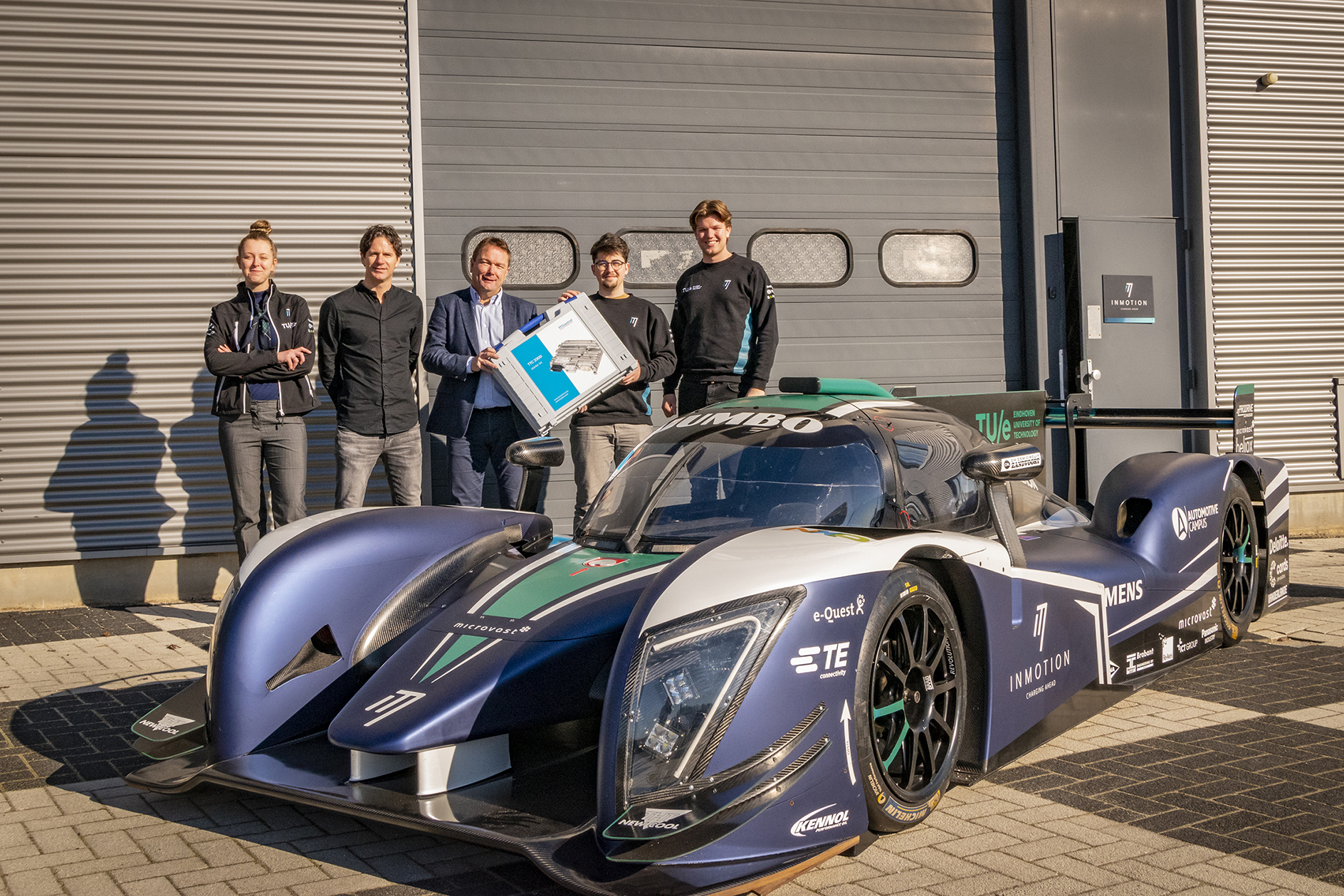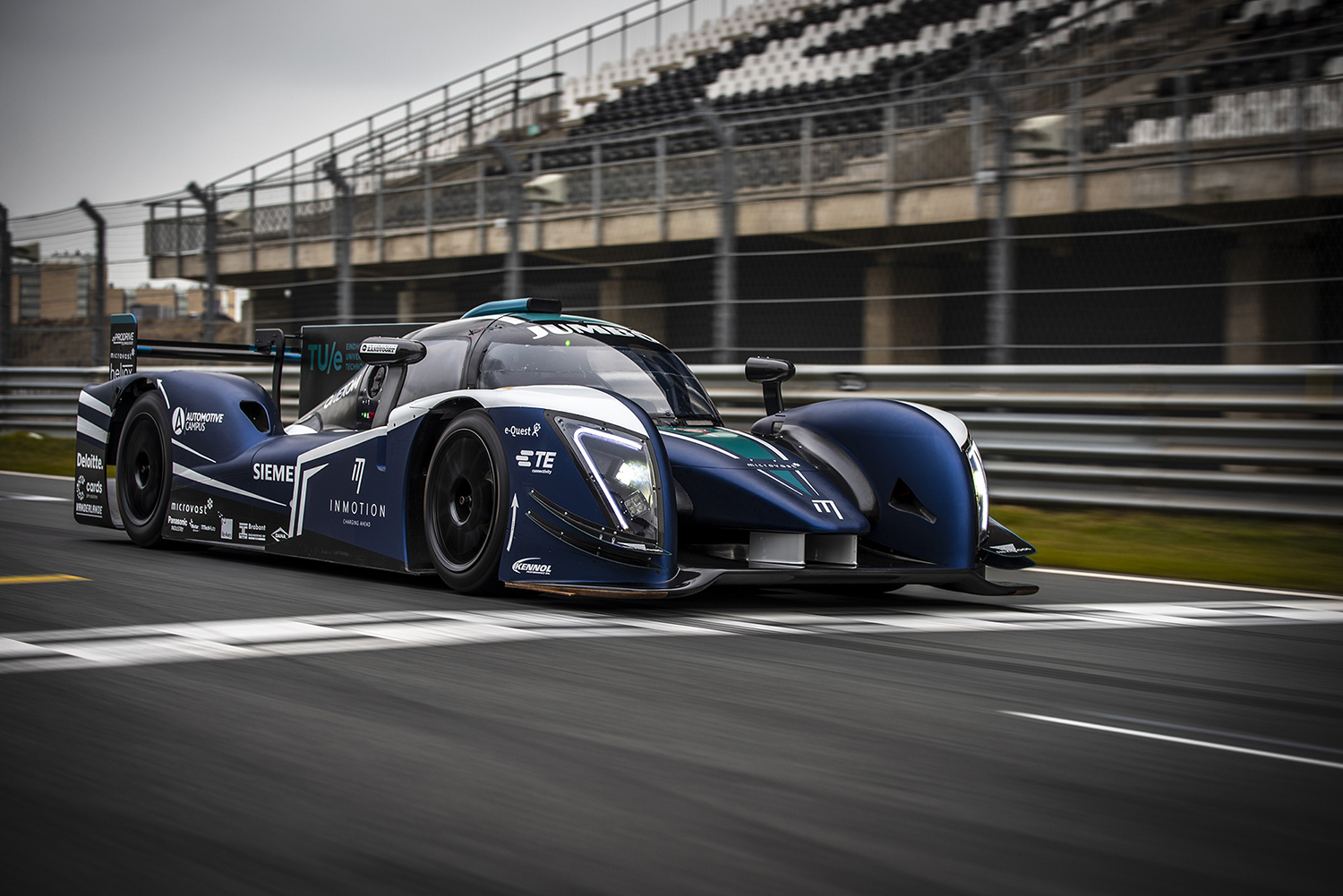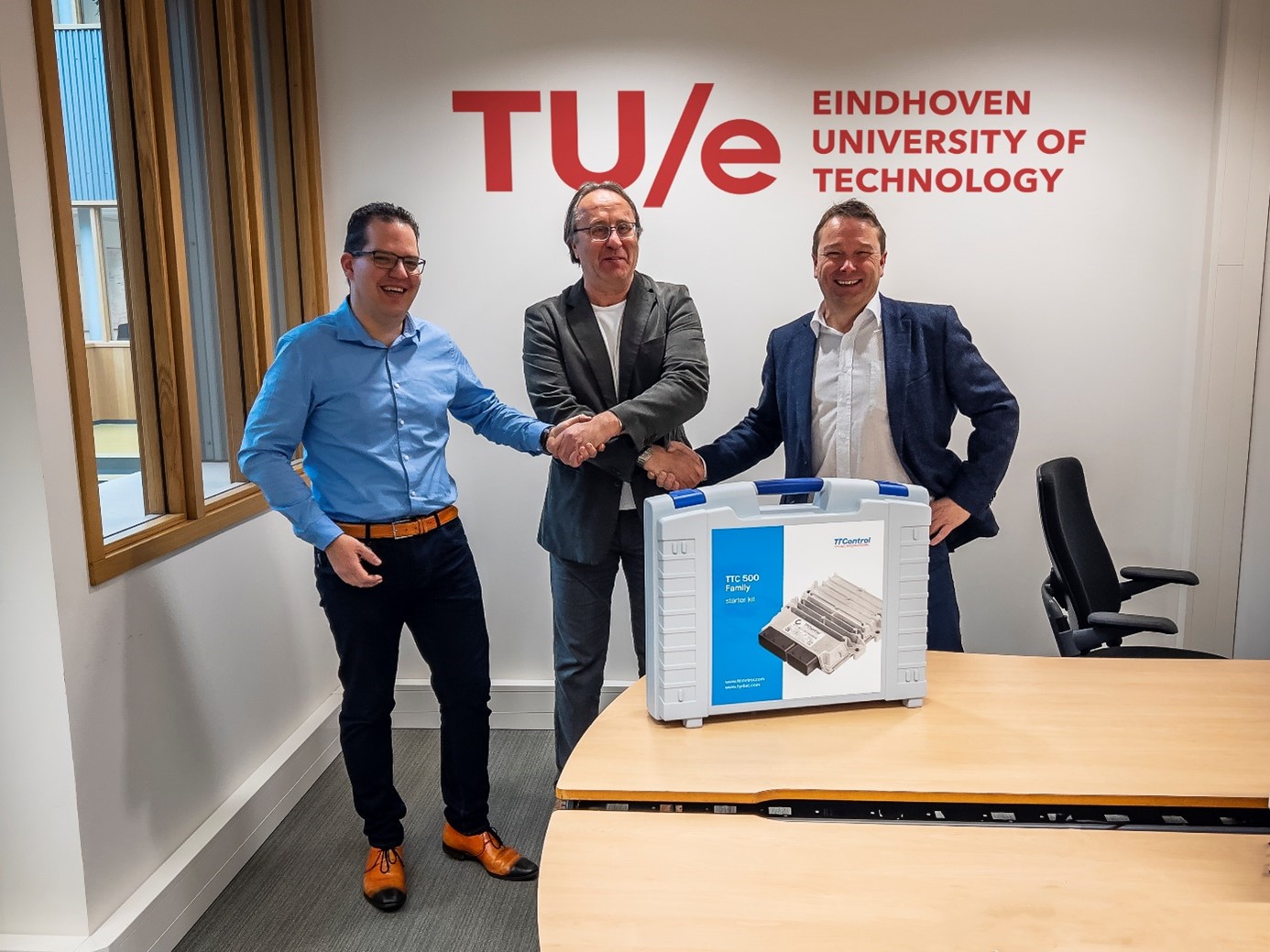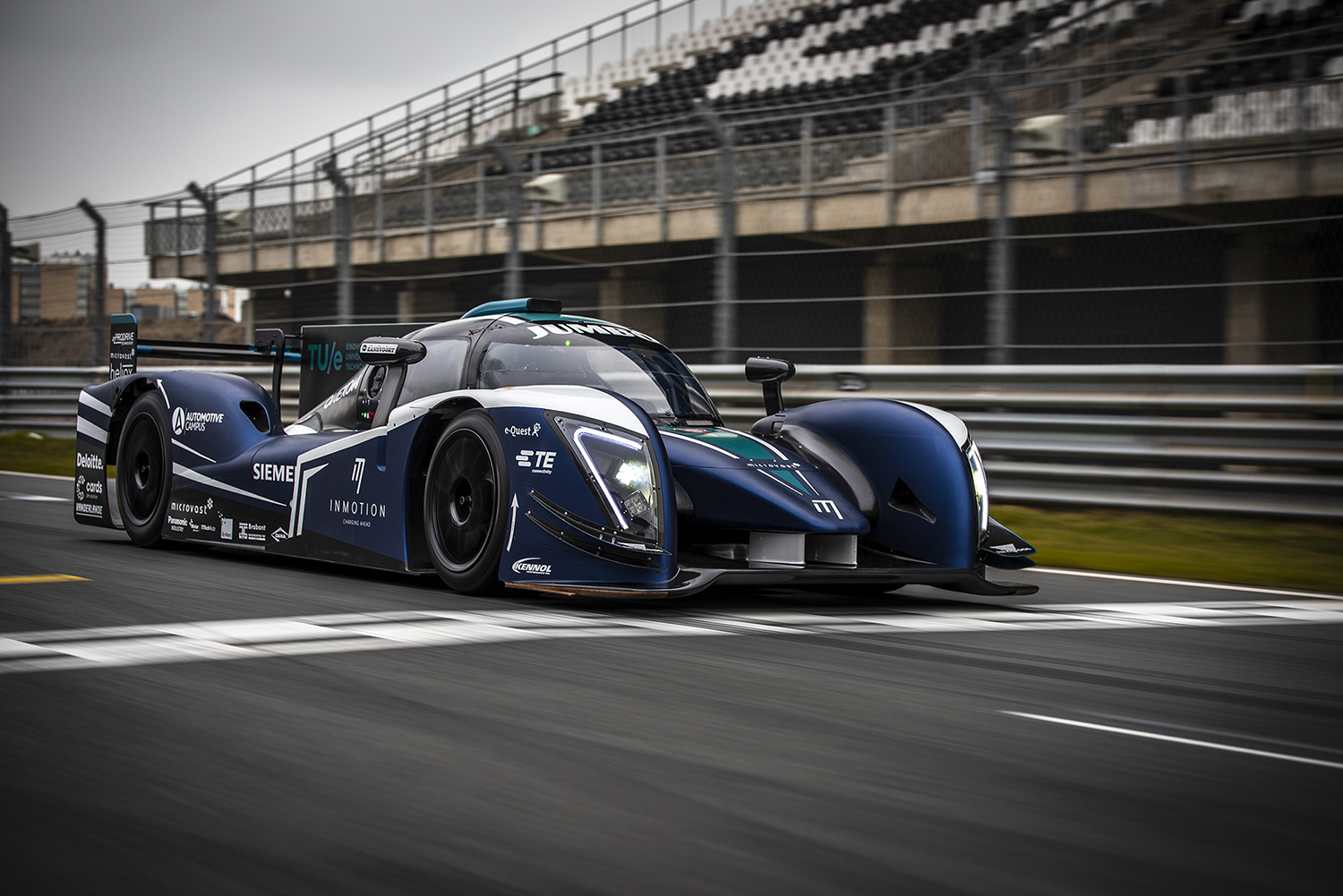
News
New revolutionary milestone InMotion
Charged within 3 minutes and 56 seconds thanks to new cooling system
- 13 July 2023
Proud partner
ICT Group is proud to announce that InMotion's TU/e student team has achieved a fantastic new milestone which now allows the racing car to be charged in 3 minutes and 56 seconds. Koen Peppelman, ICT Electronics’ Business Unit manager, comments: "It is fantastic that they managed to get under that 4-minute charging time so quickly. The new and self-designed cooling system can certainly be called revolutionary. After all, it sets a new standard that will cause a stir throughout the automotive world. We would like to congratulate them warmly on this wonderful result and we are delighted to contribute to InMotion's goal of making charging just as fast as refuelling."
"We are delighted to contribute to InMotion's goal of making charging just as fast as refuelling."
- Koen Peppelman
The Revolution
As far as we know, this makes the racing monster Revolution, as the car has been christened, the fastest-charging long-distance electric racing car in the world. Team manager Julia Niemeijer already dares to dream of direct races with petrol cars, including pit stop-worthy charging times. "Our target is: car stops, gets charged and off it goes again," says Niemeijer.
A charging time of 3 minutes and 56 seconds, with 322 kW of charging power and a total capacity of 29.2 kWh is really special for a battery pack, stresses technical manager Stijn van de Werken. It gives a range of 250 kilometres. "And don’t forget that the average electric car on the Dutch motorway has a charging time of at least 20 to 25 minutes."
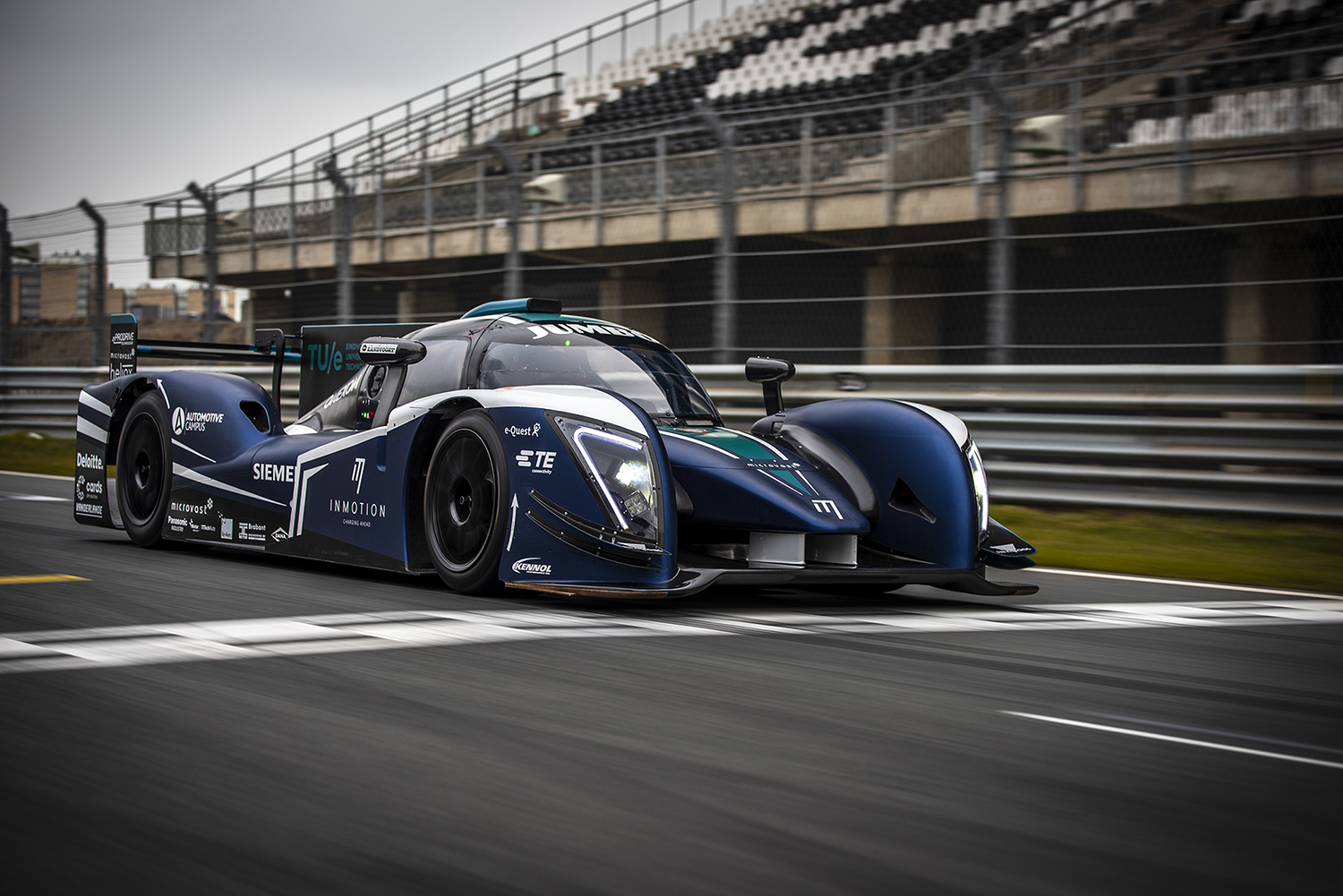
Years of cooperation
ICT Group en InMotion
Team InMotion
The student team didn’t start from scratch. InMotion consists of a new group of students every year and invents a new goal each year. This time, the goal is fast loading speed. It means a full year of hard work for the 30 team members, as almost everyone puts their studies on hold for a year. For instance, Niemeijer (Technical Business Administration) and Van de Werken (Automotive technology) are having a break on completion of their bachelor's.
Niemeijer is proud to present the car today on a circuit in Veghel. “In the beginning, I wasn’t even that super keen on racing, but I found working with a multidisciplinary team particularly challenging. After all, how do you connect and integrate all those different people and knowledge? But after accomplishing this wonderful result my heart misses a beat each time our car zooms by."
Crash test
The chassis for the Revolution was manufactured in England by Ginetta. The students then built their own technology into this racing LMP3 model. Why didn’t they build their own car from scratch? Niemeijer: “If you would do that, you would run into the obstacle that you’d have to do a crash test before you could race it, and we don't have the budget for that."
The car's big secret is in the battery pack. Batteries, even in your mobile phone, have the disadvantage that they release heat while charging. And that heat is harmful and causes wear and tear. Van de Werken: ,,Normally, there is coolant between the modules containing battery cells. However, we have devised a system that makes the coolant flow around each cell. This ensures that the heat is dissipated much faster, while it minimises the charging time."
Cool box
The engineer knows how to explain the solution pictorially even for a layman: "Think of a cool box on the beach. The current cooling system in consumer cars is like a bottom of ice with the batteries on top. In a similar manner, our cool box is filled with ice while the batteries are surrounded by the ice," says the technical manager.
In any case, there was certainly no lack of team spirit. “The month of May was super exciting: this was just before the deadline of testing our first module with our cooling system. We had put mattresses in the attic of the workshop so we could rest every now and then, but we worked for 26 hours straight. That type of excitement is contagious. As a team, we want to get the most out of this year."
